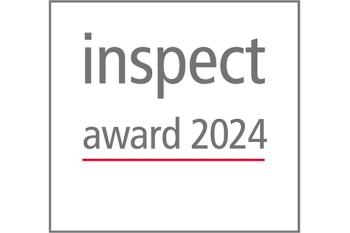100% Inspection - 100% Purity
Smart Cameras Revolutionize Bottle Inspection
In recent years, rapidly increasing product liability costs have forced manufacturers of pharmaceuticals, containers, and other sensitive products to institute inspection procedures for each individual item they produce, with zero tolerance for defects. Such product liability expenses include costs of litigation and product recalls, as well as contractual penalties and lost revenues from sales that otherwise would have accrued. For example, manufacturers of items such as recycled products can no longer rely on manual statistical inspection, and instead must adopt systems that examine 100 % of items produced.
As a result, machine vision companies have been pressed to provide significantly enhanced inspection ability while lowering per unit inspection costs. In response to these pressures, machine vision companies have integrated a camera, frame grabber, and object recognition and classification engine into combined low-cost units known as Smart Cameras, which increasingly have been adopted for machine inspection.
The pharmaceutical industry was among the first to adopt one-hundred percent inspection procedures, because of the life-threatening risks associated with defects in its products. Until recently, pro-cessors of re-useable containers such as bottles, continued to rely on manual inspection with sample-based process control. Such manufacturers depended on users' tolerance of inconsistency and occasional defects. For the reasons discussed above this approach to product inspection has proved unacceptably costly.
As a result, beer producers, for example, which rely on bottle recycling, can no longer survive as volume manufacturers without adopting policies of zero contamination defect tolerance.
A significant problem with the application required by such policies is the high rate of image data which the pro-cess generates. An inspection line can process over 4,000 bottles per minute, while generating as many as ten images of each bottle. Thus, such applications can easily produce more than one giga-pixel per second of image data. Transporting such large volumes of data from cameras to vision systems and processing that data requires large, costly system installations.
One solution to this issue is reducing the inspection rate while increasing the number of inspection lines. Traditionally, the high cost of inspection hardware rendered this solution prohibitively expensive; however, the recent availability of high- performance, low- power image processing systems has now made it viable. For example, the FC34 Smart Camera from FastVision LLC contains a high-speed imaging system, a digitizing frame grabber, and a high-performance FPGA/image processor, all in a package smaller than most machine vision cameras (28 mm x 26 mm x 100 mm). The FC34's imaging system is based on the Kodak KAI-0340 640x480 sensor, operating at 210 frames per second, and its FPGA/image processor is the PNX1702, from Nexperia. The FC34 Smart Camera is a self-contained machine vision inspection system that can be programmed with image processing algorithms and includes a "go, no-go" determination output that can be sent to the mechanical rejection unit of a multi-line inspection system running at high speed.
The FC34 Smart Camera's recycled bottle inspection application transports image data from the integrated sensor, operates the rejecters, and triggers light sources without sending images outside the FC34. It supports a LVDS serial channel to report statistical data to a central system and also supports a camera link interface for setup and transport of defect images. This smart camera internally images each bottle ten times as it is rotated in the field of view, processes the images, and provides a reject signal, without support from additional equipment.
Integrated solutions like the FC34 are increasingly common. While the beer bottling industry provides an excellent example of the trend toward adoption of one hundred percent, zero defect, high speed inspection procedures, similar issues can be expected to arise in other consumer or health-related, high volume industries. Such industries will require the installation of many more high- performance inspection systems to keep pace with production volume while identifying and eliminating all defective products. This trend will cause machine vision inspection systems to require the latest in lighting, optical, camera, and computer components, such as those in smart cameras, to provide cost effective solutions.
Contact
FastVision, LLC.
131 Daniel Webster Highway
03060 Nashua
NH
+1 603.891.4317
+1 603.891.1881








